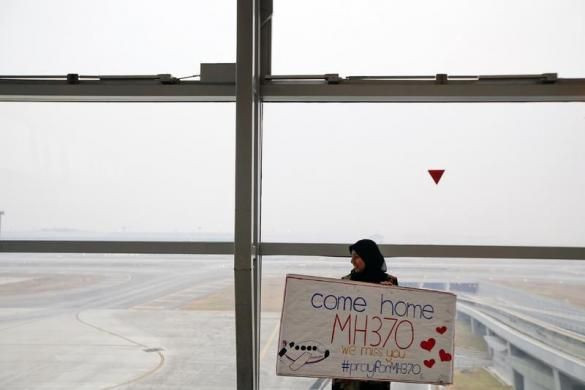Malaysia Airlines Flight MH370 Likely Brought Down By Multiple Causes; Was Not Smuggled Anywhere, Experts Say

Add one more element to the mystery of Malaysia Airlines Flight MH370: The airplane may not have been where Malaysian authorities have said until Tuesday it was when it disappeared.
Malaysian military officials revealed Tuesday, four days after the Boeing 777 vanished from radar screens between Malaysia and Vietnam, that it had turned back, crossed over the Malay Peninsula, and headed west over the Straits of Malacca that lead to the Indian Ocean. But then the chief of the air force retracted the statement, even as the search for the missing jet expanded to the west coast of Malaysia.
Military radar, which is different from civilian radar, may disprove what the Malaysian government had been saying all along -- that the flight from Kuala Lumpur to Beijing vanished without a trace about one hour after takeoff, when it was cruising at 35,000 feet between the coasts of Malaysia and Vietnam over the South China Sea.
A Malaysian newspaper, Berita Harian, quoted the air force chief, Gen. Rodzali Daud, as saying that military radar had tracked the jet until 2:40 a.m. Saturday local time, two hours into the flight, until it reached a point near the island of Pulau Perak, hundreds of kilometers west of its earlier, supposed point of disappearance. It was flying at 29,000 feet, an altitude still compatible with a large jetliner cruising normally. "After that, the signal from the plane was lost," the general said. A senior air force officer told Reuters the same thing, but Daud denied the report later Tuesday.
Experts still believe that the giant, long-range twinjet with 227 passengers and 12 crew has crashed somewhere. But the reason for the likely crash remains obscure.
"History tells us it will be more than one cause. There may be human, mechanical, environmental aspects," said John Cox, a retired captain who flew for decades with US Airways and is now CEO of Washington, D.C.-based aviation consultancy Safety Operating Systems.
Whether the plane really diverted westward and flew over the Straits of Malacca or not, there is another fact we know: The crew did not attempt to make radio contact with the ground to warn of a hijacking or a malfunction. That has led to speculation that the plane was destroyed by an explosion, either because of a bomb or a catastrophic failure, or disintegrated in midair, possibly because of a structural defect.
But even in the case of a hijacking or a diversion for other reasons, it's not obvious that the pilots would contact air traffic control. "If the captain believed there was a problem on board that required a diversion, the first task is still to fly the plane," not necessarily to inform ground controllers, Cox said. "Their job is to keep airplanes separated. Air traffic control can do nothing for you" in the event of a hijacking or failure, he said.
An earlier suspicion of foul play was dispelled when Malaysian authorities said Tuesday that the two passengers with stolen passports on the flight were young Iranians who wanted to reach Europe via Beijing and become refugees, not terrorists.
Another theory that has begun circulating Tuesday, in the absence of any illuminating statement from authorities in Malaysia or elsewhere, is that the jet was stolen by unidentified people aboard and flown to a remote location. Terrorists might want to use it to attack ground targets, that theory held -- but experts have been quick to dismiss it.
"I find it hard to believe that someone flew the airplane to some other destination and that it would not be seen on radar somewhere," said Curt Lewis, president of Curt Lewis & Associates, a safety and risk management consulting firm based in Arlington, Texas. And even if the pilots, or trained hijackers, had managed to fly the jet somewhere, "I don't think you can hide the aircraft that effectively," added Lewis, who also has been corporate manager of flight safety at American Airlines.
Yet, four days into the search -- which has turned up nothing, not a single piece of the airplane or a speck of hard evidence -- the disappearance of Flight MH370 still offers only hints of what might have happened in the early morning of March 8 in the skies over Southeast Asia.
"I don’t remember (an accident) that has had this lack of detail so far into it," Cox said, "I have been an investigator for over three decades and I’ve learned to keep my mind very open. And until we get more physical evidence, my mind is wide open."
"I am very strongly convinced we will find the airplane," Cox said. Maybe find it intact, sitting in a location as yet unimagined? “No,” the former US Airways captain said. “I do not think they will find it in one piece.”
© Copyright IBTimes 2024. All rights reserved.





















